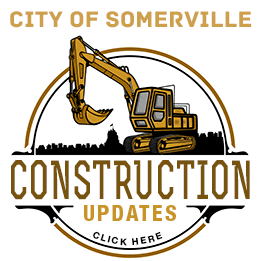
I asked my neighbor and friend in Somerville, Mass., the acclaimed poet Afaa Michael Weaver to write a piece about the the late Maya Angelou. Weaver, a journalist back in the day in his native Baltimore came through right on deadline. Weaver recently won the Kingsley Tufts Award for Poetry, and won a Pushcart Prize for his work in Ibbetson Street, a Somerville-based literary journal. Weaver is a professor of English at Simmons College in Boston.
On May 28th, Dr. Maya Angelou made her transition. She was eighty-six years old. Poetry was her first love as a writer. Her life as an artist and activist embodied some of the most significant events in world history during the twentieth century. She befriended James Baldwin in France, worked for Dr. Martin Luther King, met Malcolm X, lived in Africa, had an enduring friendship with Nelson Mandela, and more. She inspired several generations of people.

Maya Angelou ~Photo by Chester Higgins, Jr.
Her fame as a writer took hold with her first autobiography, I Know Why the Caged Bird Sings,”where she revealed a life filled with a wellspring of energy rooted in the culture and traditions of African Americans. It was published in 1969, the year of her forty-first birthday, and in the recounting of her life she revealed having been abused as a seven year old, a child barely beyond her formative years. After her abuse she was a “voluntary mute”for seven years, a period of silence during which she said she wrote. She wrote and she listened. When she began to speak again, she had connected to the internal power that would make her a figure on the world stage.
Maya Angelou broke an unwritten code for black Americans, namely that child sexual abuse was seldom discussed, certainly not outside the black community. Much of that has to to with the necessary coping strategies of a world built in segregation, but what makes her story and her life especially remarkable is that her healing took place within the tradition of her culture. She held onto the truthfulness of a love and spirituality carved in the rough terrains of slavery and its aftermath. It is that energy that made her a humanistic icon for many people.
She was also a dancer, singer, actor, an film director. She lived with the dynamic energy of a well-rounded artist. As director of the 1998 film Down in the Delta, she gave the gift of her organic wisdom, her vision of African American culture through the prism of her own experiences. In the film a black family with roots in Mississippi find that their southern home is their healing place, the place where they can retreat and draw the sustaining power of the community, its love and its meaning. A silver candelabra is the family heirloom, passed down from slavery when the patriarch of the family was sold in exchange for it. After the Civil War his son took it in remembrance of his father who was sold away. The candelabra is an icon to mark the miracle of survival much like the miracle of Angelou’s own recovery from abuse in the context of a love she maintained for her family and culture. In that she found a power.
I read I Know Why the Caged Bird Sings in the year immediately after it was published. I read it alongside The Autobiography of Malcolm X. The two books were the lenses that helped me envision myself as a black man and a poet. In the wake of my own recovery from having been abused as a child, I look back at Dr. Angelou’s autobiography and remember how deeply I was moved. The secret of her incredible spirit and presence was in her faith in African American culture, in her own people and emanating outward from there to the whole world.
Maya Angelou walked in the world without apologizing for her identity or life as a black woman, and that is, I believe, a lesson for anyone. She walked with an openness that allowed her to see herself in Shakespeare, and to love his art as her own. She treasured the fact of being able to be touched in the spirit by someone so far from her, and in her life she did the same for people born in cultural places so far from her own.
She so much loved the poem “Sympathy,”by Paul Laurence Dunbar that she applied it to the title of her first autobiography. The poem takes on the subject of confinement and freedom, and so I close with her own lovely and inspiring poem about how the captivity of a bird and its longing for freedom is so much of what life is about for everyone.
Caged Bird
by Maya Angelou
A free bird leaps
on the back of the wind
and floats downstream
till the current ends
and dips his wing
in the orange sun rays
and dares to claim the sky.
But a bird that stalks
down his narrow cage
can seldom see through
his bars of rage
his wings are clipped and
his feet are tied
so he opens his throat to sing.
The caged bird sings
with a fearful trill
of things unknown
but longed for still
and his tune is heard
on the distant hill
for the caged bird
sings of freedom.
The free bird thinks of another breeze
and the trade winds soft through the sighing trees
and the fat worms waiting on a dawn bright lawn
and he names the sky his own
But a caged bird stands on the grave of dreams
his shadow shouts on a nightmare scream
his wings are clipped and his feet are tied
so he opens his throat to sing.
The caged bird sings
with a fearful trill
of things unknown
but longed for still
and his tune is heard
on the distant hill
for the caged bird
sings of freedom.














Reader Comments